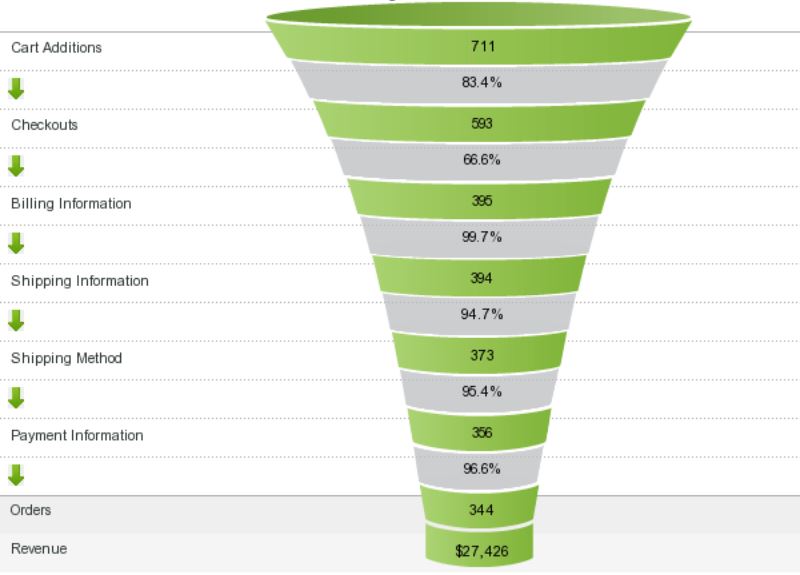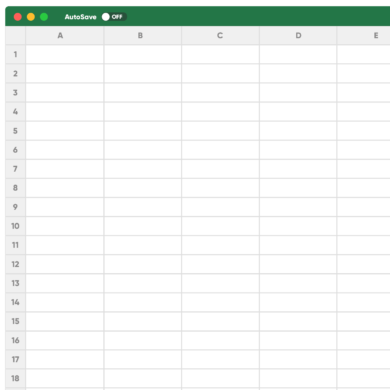what could a manager use to measure the success of an mis project
Yous spend a boatload of money on your website, but how practise y'all know it'southward successful? It's 1 of those questions business organization owners frequently wonder about but don't actively seek to answer. Instead, they frequently brand marketing decisions based on gut feeling.
Exhibit A: Well, I experience like the telephone has been ringing more than often, so I think what we're doing is working.
Showroom B: We don't seem to exist equally decorated this yr equally we were last yr. I think nosotros should stop doing internet marketing.
Concern decisions should exist driven by information, not by a perception of how busy you are or by how much yous recollect the phone is ringing. But just what data should you employ?
There are a lot of junky metrics out in that location. If you actually want, you can observe data that will make any marketing campaign look great. Look, your unique daily visitors from Bing by tablet users doubled this past calendar month!
Hither are some of the best metrics for measuring success. The important affair is not just finding the right data; you lot have to use information technology the right way.

1. Conversions
Let's beginning with the well-nigh obvious. Aye, y'all demand to measure conversions. That means you demand to know what y'all're trying to catechumen. Information technology could be sales, acquirement, contact form submissions, newsletter signups, whatever. You wouldn't believe how many businesses simply aren't tracking conversions. I've seen clients with v years of data in Google Analytics and admittedly Naught goals fix. What's the betoken of tracking anything if you aren't tracking what matters the about? We've even seen people running AdWords campaigns without whatsoever goals. How tin y'all possibly know if your campaign is paying off? If you aren't tracking conversions, you might likewise delete your analytics and ask a crystal ball how to market your site.

ii. ROI/ROAS
What'southward the best way to know if your marketing efforts are actually paying off? Calculate your ROI and ROAS. No matter what type of marketing you're using, every business owner should be aware of return on investment (ROI). This metric is a measurement of your profits relative to your costs. In theory, ROI is pretty simple to calculate (at to the lowest degree for ecommerce websites). Subtract the cost of your goods from your revenue and carve up that past the toll of the goods. Things get a footling trickier for lead generation sites. Y'all take to know a few things, like how much acquirement a sale/lead is worth and how much you invested in making that auction. Of course, these are things every business owner should know, but many people seem to struggle when asked how much a customer is worth to them.
Return on ad spend (ROAS) is a great metric for an ecommerce site. It directly shows how your ads are doing relative to sales on your website. ROAS calculates how much acquirement your ads have generated (and Google calculates information technology for yous!). If you sold $m worth of goods and spent $100 on ads, your ROAS is chiliad%. Not too shabby. Of course, this isn't a measurement of profit, simply information technology is an splendid indicator of whether or not your ads are working.

3. Conversion Rate
Knowing how many conversions y'all go each month is neat, but you also demand to know the rate at which these conversions occur. Merely you need to go virtually it in a style that makes sense.
The most bones conversion rate possible is the number of conversions divided by the number of visits. And so if you had 100 orders and 1,000 visits, and so your conversion rate is 10%. But this might not be the all-time way of measuring your conversion rate. Perchance half of those orders are from dealers who buy every time they come up to your site. These dealers are making your conversion charge per unit look a lot better than information technology is. Segment them out and you accept a more accurate picture of how frequently your general visitors are converting.

What if your site serves multiple purposes? Peradventure half of your site is dedicated to educating people and the other one-half is selling your product. That ten% conversion rate probably isn't a true indicator of your success. You lot might go a better picture by creating a segment that only looks at visitors who viewed a product.
Conversion funnels are too hugely important, specially for ecommerce sites. What percentage of your customers who put something in the cart actually start the checkout procedure? How many customers who starting time the checkout process actually identify an order? Where do most of your client drib out? These are things y'all need to know if you e'er hope to improve annihilation.

The key here isn't to make the numbers await improve or worse than they are. What you're trying to do is make the information more usable. Once you detect out a true conversion charge per unit, y'all tin start to make informed changes. If you're looking at the wrong numbers, you might make changes that are pointless.
4. Bounce Rate
We all know the famous proverb nearly bounciness rate: they came, they saw, they puked. But how are you using bounce rate? If yous're just looking at the total percent of bounces each month and saying, "That doesn't look too bad," and then you might as well only make up an arbitrary number instead.
If you only wait at bounciness rate holistically, then it isn't going to tell yous much of anything. Yes, information technology will tell you that 47% of visits last month resulted in a bounce. But what does that hateful? Does it mean that 47% of visitors hated your website? Probably not, simply you tin't e'er know merely from that number. You lot need to get creative.
Like shooting fish in a barrel-to-Employ Google Sail
Complimentary Marketing Budget Template
Get your free template to help you balance what and where your spending.

To get something out of bounce rate, you demand to break it down. Look at which pages have the highest bounce charge per unit. If your total bounce charge per unit is 47% only your homepage has an 85% bounce rate, then perchance the homepage experience is lousy. Look at bounciness rate by device blazon or browser. If 75% of mobile visits result in a bounciness while only 25% of desktop visits do, then you may accept an upshot with your mobile usability. Now that's data you tin can actually utilize.

Don't just use bounciness charge per unit as a universal indicator of how happy people are with your website. Use it equally a tool for making adjustments to your site and your marketing campaigns.
five. Customer Satisfaction
Speaking of how happy people are with your website, practice you actually know if people are satisfied with your website? Maybe the reason you aren't selling enough product or getting enough leads is because your visitors don't similar what they run into. Or maybe they have come up to your site with false expectations. Or maybe they simply aren't the right audience. Whatever the instance, customer satisfaction can be a helpful metric in guiding your marketing campaign. But how exercise you measure this? Here'southward a crazy idea: ask your customers. Get feedback directly from your visitors. Y'all tin can add a standard Google consumer survey to your site for costless. With these 4 elementary questions, you tin notice if your visitors are satisfied with your site, why they are visiting your site, what they don't like about your site, and whether or not they are successful in their visit. Go on in heed that your visitors aren't experts on web design, just they are your target audience. You lot may want to mind to them.

6. Visits/Sessions
While conversion- and appointment-driven metrics are the most important, nosotros can't forget nearly traffic metrics. More than anything else, every website owner seems to want tons of visits. You lot can't arraign people for wanting this. A lot of visits suggests your site is popular. If your website is popular, you're more likely to get leads or sales. In reality though, visits don't mean that much on the surface. What good are x,000 visits if y'all only had ten sales? Still, many site owners have said something along the lines of, "Yeah, we're getting tons of leads. Only when are we going to start getting more visits?"
Visits are important. They tin can serve every bit an overall indicator of how your marketing efforts are working. After all, a big part of marketing is getting people to come and bank check you out. Go them in the door. If your visits drop drastically during a particular period, this might be an indicator of a problem with one of your marketing channels.
There are some dangers in paying too much attention to your visits though. The number of visits you get each calendar month can vary widely, and it may not ever equate to your marketing efforts. For example, a huge fasten could exist from spam bot referral traffic. Or peradventure yous were running AdWords final year and you aren't this year. Or maybe i of your blog posts was a hot topic on Reddit for a day. Sometimes offline media can even cause surprising spikes in direct traffic. When you're comparing year-over-year traffic, you lot need to be aware of what might have caused these fluctuations.

Paying attending to visits tin can also help you notice a major problem. If you lot observe a huge driblet in visits, maybe your site is no longer indexed. Or maybe your analytics lawmaking was diddled out. Let the metrics help you find potential problems and the possible solutions.
Bonus: A/B Testing
Okay, A/B testing itself isn't a metric. It's an experiment, but information technology leads to metrics, and those metrics lead to informed changes that can increment your conversions. If y'all aren't testing something on your website or with your marketing efforts right at present, then you should exist. You can test just about anything. Different calls to activeness, dissimilar product layouts, unlike contact forms, different headlines. Collect information over a period of fourth dimension and run into which option performs better. Only before you make whatever definitive changes, be sure your data is statistically significant. Don't redo your product pages because i layout sold 2% more products after vii days of testing.

Conclusion
If you aren't paying attending to the right metrics—and using them the correct fashion—then your marketing entrada tin can never really be successful. Don't rely on your gut when information technology comes to your business success. Pay attending to the data and use it wisely to make informed decisions.
This post is role of Net Marketing Mysteries, a weekly column addressing bodily client questions related to SEO, analytics, website best practices, and whatever other topic continued to internet marketing. Have a question you'd like to come across tackled in a future mail? Let us know in the comments.
corbouldowelp1975.blogspot.com
Source: https://www.perrill.com/what-metrics-should-i-use-to-measure-success/
0 Response to "what could a manager use to measure the success of an mis project"
Post a Comment